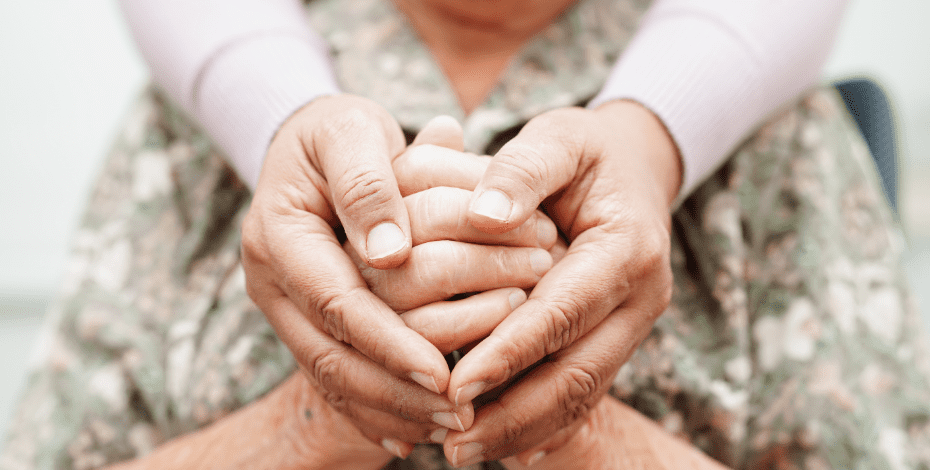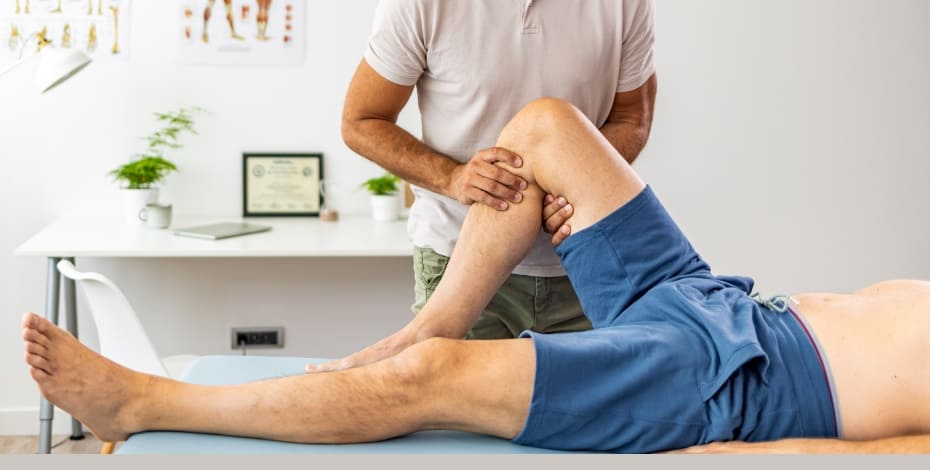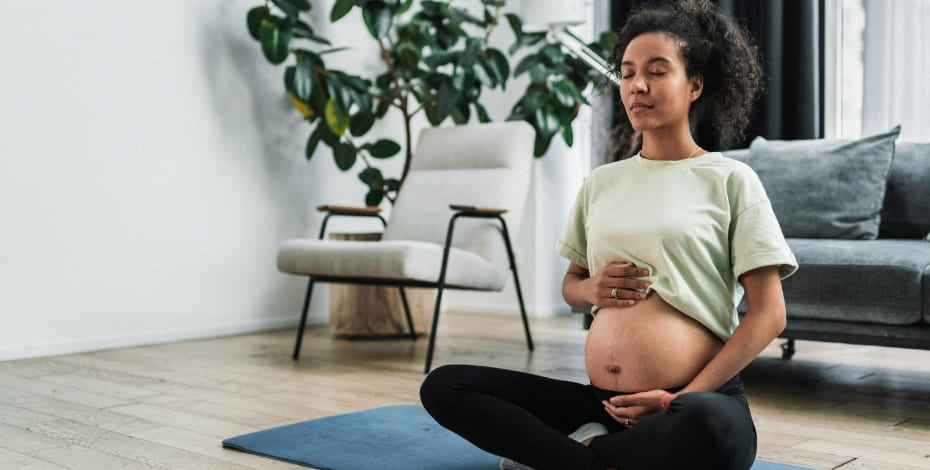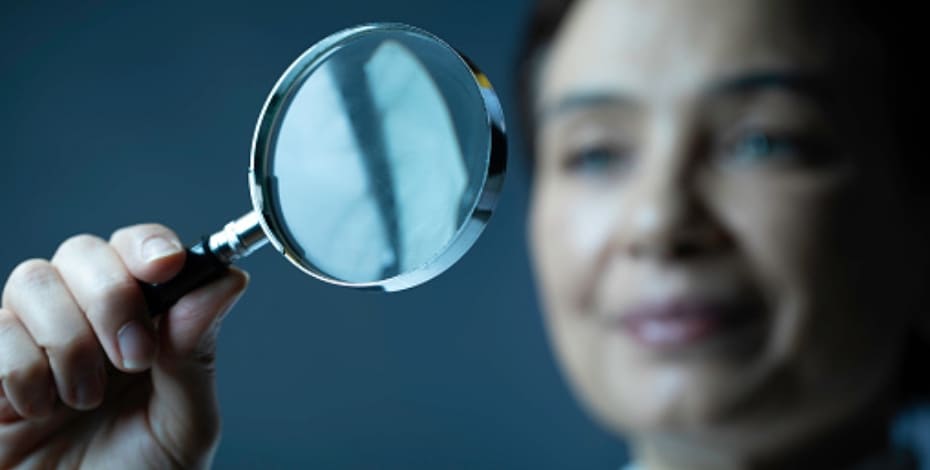
Physiotherapists can help with endometriosis

Endometriosis is a complex pain disorder and pelvic health physiotherapists can use a number of management strategies to help, says Angela James.
Endometriosis is derived from the Latin terms endo (inside), metra (uterus) and osis (disease).
It is a complex, inflammatory, estrogen-dependent pain disorder affecting 11 per cent of women, girls and those assigned female at birth (Zondervan et al 2020, Rowlands et al 2021).
It is characterised by tissue similar to the lining of the uterus (endometrium) growing in other parts of the body, including around the bladder and bowel.
This tissue has also been found in the skin, lungs and brain (Zondervan et al 2020, Taylor et al 2021).
Common symptoms of endometriosis are period pain (dysmenorrhoea), heavy bleeding (menorrhagia), infertility, fatigue, painful urination (dysuria), difficult defecation (dyschezia) and sexual pain (dyspareunia).
The pain symptoms may be constant, intermittent or provoked and their severity may fluctuate monthly, hourly or daily.
It takes an average of 6.5 years to receive a diagnosis of endometriosis (Armour et al 2020) and by this point, a person’s pain experience is often not accurately represented by the stage of disease (Hsu et al 2011).
Women with the most severe stage 4 endometriosis might experience minimal symptoms, while others with mild stage 1 might be immensely affected by pain.
It can be a confusing experience for patients to undergo laparoscopic surgery, in which all diseased tissue has been successfully removed, and to have their menstruation suppressed with hormonal or medical treatments, yet their pain persists.
Typically, patients are left asking clinicians questions such as:
• Why do I still have pain after my endometriosis surgery?
• How can I still have pelvic and period pain even though I’m using hormone therapy to suppress my cycle?
• All my test results have come back normal—so why do I still have pain?
Endometriosis-associated pain syndrome
Endometriosis-associated pain (EAP) syndrome is defined by the 2023 European Association of Urology Guidelines on Chronic Pelvic Pain as ‘chronic or recurrent pelvic pain in patients with laparoscopically confirmed endometriosis… the term is used when the symptoms persist despite adequate endometriosis treatment.
It is often associated with negative cognitive, behavioural, sexual or emotional consequences, as well as with symptoms suggestive of lower urinary tract, sexual, bowel or gynaecological dysfunction’ (Engler et al 2023).
While endometriosis is thought to initially arise due to local inflammation, lesions and hormonal effects (Zondervan et al 2020), the persistent nature of EAP is due to a more widespread response in the body and it is proposed that endometriosis is a systemic disease (Taylor et al 2021).
The pain system response includes changes in the central and peripheral nervous system, pelvic organ cross-talk, changes in the pelvic floor and abdominal muscles, alterations in mood, stress and sleep and the presence of comorbid pain syndromes (Taylor et al 2021, Yong et al 2020, McNamara et al 2021).
Central and peripheral sensitisation Research has shown increases in pelvic nerve size, density and activity levels in people with EAP (Maddern et al 2020, Zheng et al 2019). This means that nerves in the pelvis become excitable and send more ‘danger’ messages to the brain.
This neural excitability is due not only to endometriosis lesions, but also to a widespread sensitised state—like when an alarm goes off with a minor trigger (such as a leaf falling onto a car, setting off the car alarm).
Over time, this causes the brain to be bombarded with ‘danger’ signals from the pelvic region and it loses its ability to dampen down the ‘noise’ from below (descending inhibition).
When patients are in this sensitised state, their pain threshold reduces throughout the whole body, meaning that they are more sensitive to light, sound, touch, temperature and smell (Nijs et al 2021).
It can also lead to interpreting normal bodily sensations as a danger or ‘threat’ and may cause discomfort with digestion or bladder filling.
When amplification of normal internal sensations causes internal pain, this is referred to as visceral hypersensitivity (McNamara et al 2021).
Pelvic organ cross-talk
The pelvis is a busy area, housing the bladder, bowel, sex organs, pelvic joints and pelvic muscles.
Visceral structures (uterus, bowel and bladder) and somatic structures (skin, muscles, fascia and bones) in the pelvis share neural pathways before travelling up to the brain (convergence), resulting in similar symptoms.
When one area becomes sensitive, resulting in an increase in nerve action, it easily spreads to a neighbouring area, causing it to become excited or sensitive too (cross-sensitisation).
This pelvic organ cross-sensitisation or ‘cross-talk’ is one of the reasons why bladder and bowel symptoms and pelvic muscle dysfunction coexist with EAP (McNamara et al 2021, Maddern et al 2020, Zheng et al 2019).
Pelvic floor and abdominal muscle function
Research has shown that women with EAP are more likely to have increased tone and tenderness of their pelvic floor and abdominal muscles (Fraga et al 2021).
In fact, in an observational study, 45 per cent of endometriosis patients were not able to completely relax their pelvic floor muscles when assessed (Fraga et al 2021).
This is called pelvic floor tension myalgia, where the pelvic floor muscles are tight and painful to touch and are unable to relax or incompletely relax (Frawley et al 2021).
Symptoms associated with pelvic floor tension myalgia are pain with penetrative sex (dyspareunia), genital aches or sharp pains and voiding dysfunction or defecation difficulty (dyschezia).
Alterations in mood, stress and sleep Research has shown that a depressed mood, anxiety, poor sleep quality, pain anticipation, catastrophising, stress and increased attention to pain are all associated with higher pain intensity (McPeak et al 2018).
The relationship between these factors and endometriosis is thought to be bi-directional, meaning that endometriosis and inflammation can alter mood, while stress/anxiety and maladaptive pain beliefs can amplify EAP (McPeak et al 2018).
This is often referred to as the vicious cycle of pain and it explains why it is important to address the psychological and emotional distress often experienced in EAP.
Coexisting pain conditions
People with endometriosis are likely to experience additional chronic overlapping pain conditions such as bladder pain syndrome and irritable bowel syndrome (McNamara et al 2021, Lamvu et al 2021).
In fact, 43–60 per cent of endometriosis patients were observed to have coexisting bladder pain syndrome, which is characterised by pain in the bladder or pelvis, urinary urgency and urinary frequency (Tirlapur et al 2013, Cheng et al 2012).
The rate of irritable bowel syndrome for women with EAP is 60 per cent (Schomacker et al 2018) and 11 per cent have coexisting vulvodynia (Graziottin et al 2020).
All these pain conditions share the common features of pain mediated by inflammation, central and peripheral sensitisation, visceral hypersensitivity and a consequent reduction in quality of life.
Although this presents a complex picture of EAP syndrome, with many different factors beyond lesions influencing a patient’s pain experience, it is important to remember that all the systems in the body are capable of change (bioplasticity) at any point in the journey.
Pelvic health physiotherapists with training in gynaecological, urological and gastroenterological conditions, abdomino- pelvic disorders, general musculoskeletal disorders and persistent pain management are ideally placed to contribute to the multidisciplinary team approach.
Pelvic health physiotherapists use many different management strategies to support people with EAP to move towards their meaningful goals.
An EAP management toolkit often includes contemporary pain neuroscience education, movement and exercise therapy, mindfulness and stress reduction, pelvic floor muscle treatments, sleep, self-care, dietary changes and psychology.
Over time, this broader, more holistic approach can reduce pain, improve quality of life and help patients live well with a complex persistent pain condition.
Thanks to Elise Fraser MACP, lecturer and coordinator of women’s, men’s and pelvic health programs at the University of Melbourne, for her contributions to this article. Thanks must also be given to Dr Shan Morrison FACP, a Specialist Women’s, Men’s and Pelvic Health Physiotherapist (as awarded by the Australian College of Physiotherapists in 2011) and Director of Women’s & Men’s Health Physiotherapy.
>>Dr Angela James FACP is a Specialist Women’s, Men’s and Pelvic Health Physiotherapist (as awarded by the Australian College of Physiotherapists in 2022). Angela is an active member of the Clinical Advisory Committee for Endometriosis Australia.
Quick links:
© Copyright 2024 by Australian Physiotherapy Association. All rights reserved.





